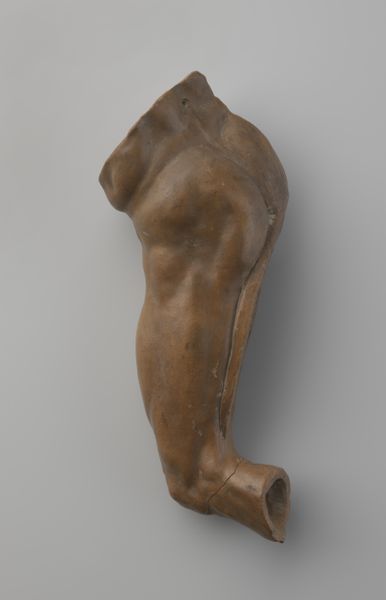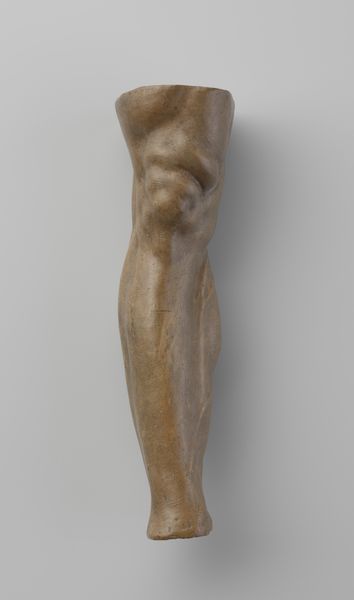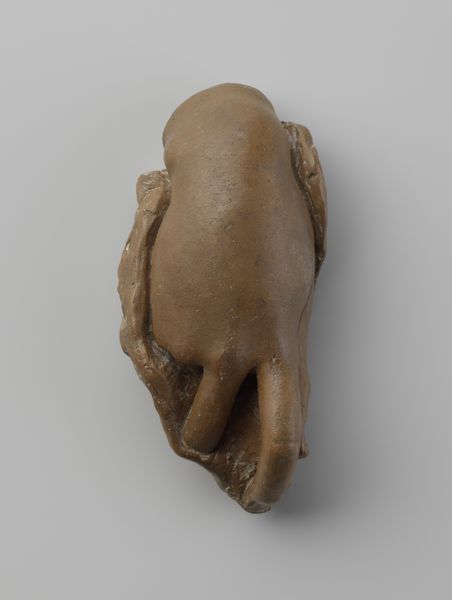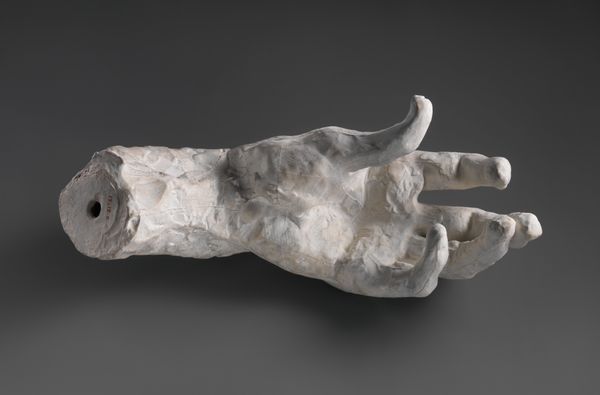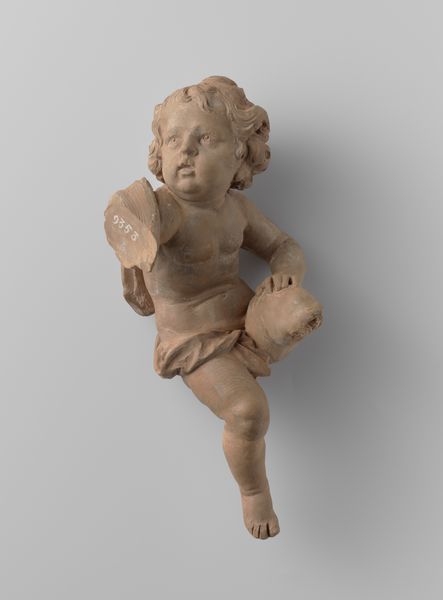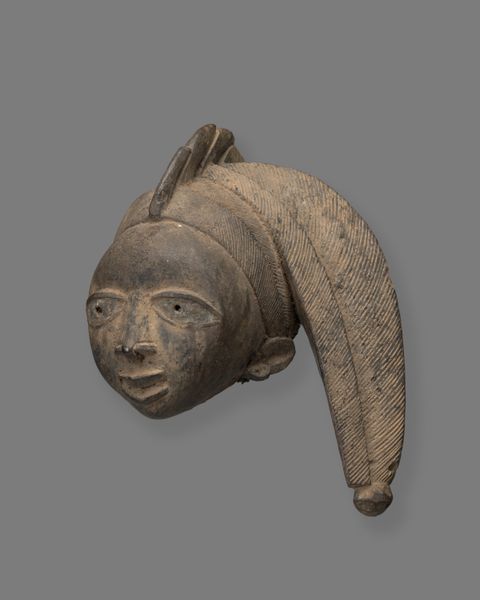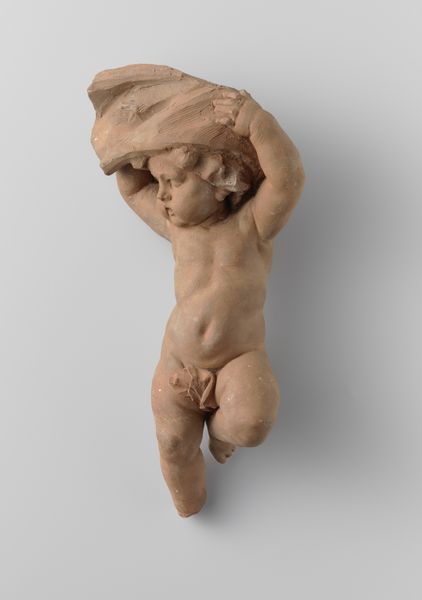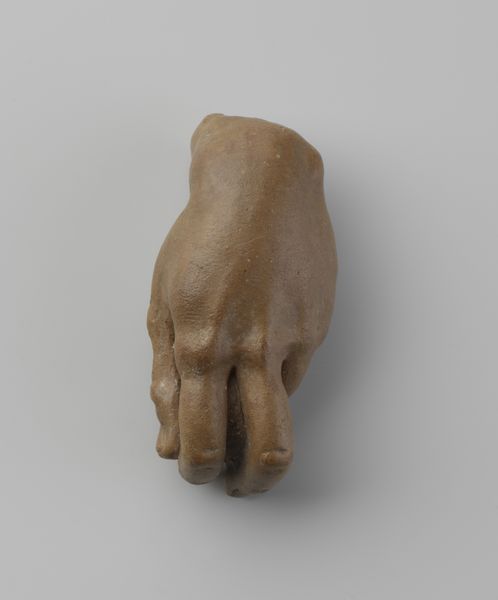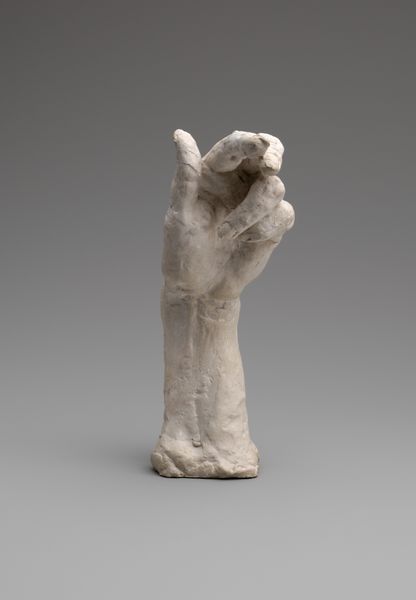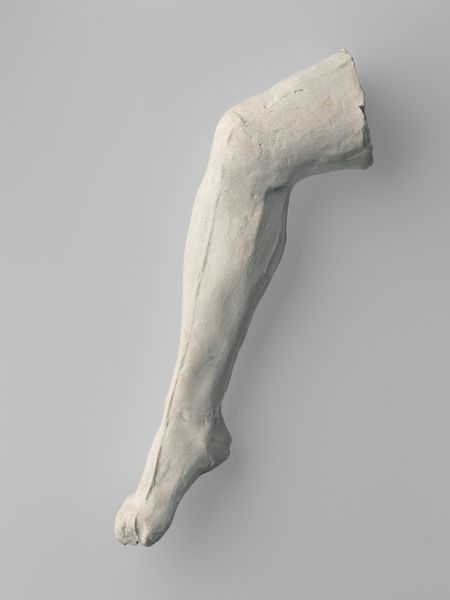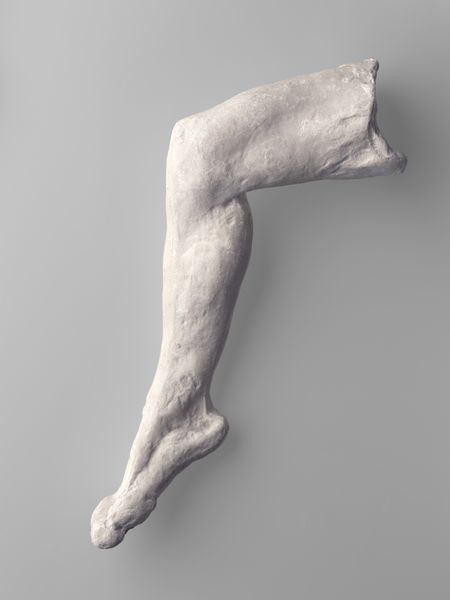
sculpture, marble
#
figuration
#
11_renaissance
#
sculpture
#
marble
#
italian-renaissance
#
nude
Copyright: Rijks Museum: Open Domain
Johan Gregor van der Schardt modeled this study of a human leg in the late Renaissance, likely around the 1570s, using terracotta. Terracotta is a low-fired ceramic, typically made from a fairly coarse clay. The inherent qualities of the material – its ready availability, ease of modeling, and relatively low cost – would have made it ideal for studies like this. Van der Schardt likely built this leg up gradually, adding coils and lumps of clay, refining the surface with tools to achieve a convincing level of anatomical detail. The resulting object would have been valued as a study aid, not necessarily as an artwork in its own right. The handwork involved, while skillful, would have been seen as more akin to craft than fine art. Yet, by focusing on the material and the making, we can see that this modest object occupies an important place in the history of both sculpture and scientific inquiry.
Comments
rijksmuseum about 2 years ago
⋮
This group of small models of parts of the body is carefully copied after famous sculptures, in particular by Michelangelo, in Florence and Rome. They came from the workshop of the Nijmegen sculptor Johan Gregor van der Schardt, who had a successful career in Italy, Nuremberg, and Copenhagen. They are extremely rare examples of the, in part autograph, study material of a 16th-century sculptor.
Join the conversation
Join millions of artists and users on Artera today and experience the ultimate creative platform.
